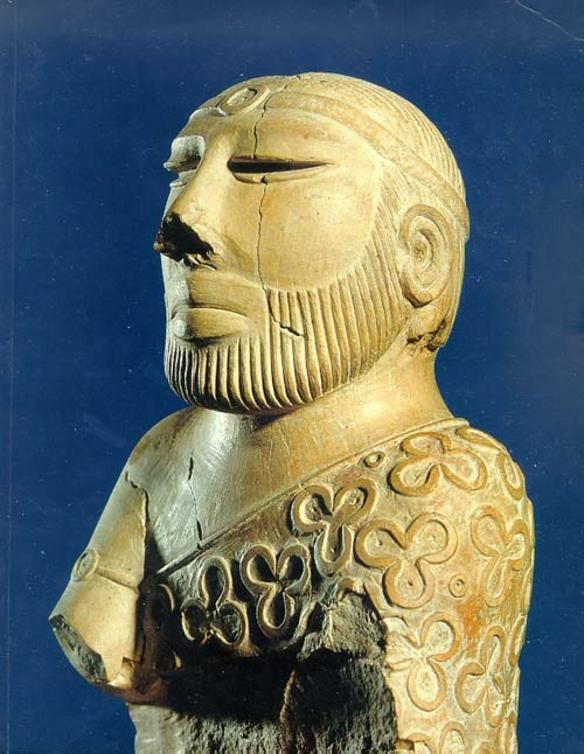Country Pakistan Languages spoken Area 347,190 km2 | Capital Founded 14th Aug 1947 Chief Minister Abdul Malik BalochNP Governor Muhammad Khan Achakzai Population 7,914,000 | |
Colleges and Universities University of Balochistan (Quetta), Balochistan University of Information Technology - Engineering and Management Sciences (Quetta), Bolan Medical College (Quetta), Balochistan University of Engineering and Technology (Khuzdar), Lasbela University of Agriculture - Water and Marine Sciences (Uthal) | ||
Balochistan (Balochi, Pashto: ????????? Urdu: ?, Balocistan, ), has the largest area of Pakistans four provinces, constituting approximately 44% of the countrys total land mass, and the smallest population, being home to less than 5% of the countrys population. Balochistan province is bordered by Afghanistan to the north and north-west, Iran to the south-west, the Arabian Sea to the south, Punjab and Sindh to the east, and Khyber Pakhtunkhwa and Federally Administered Tribal Areas to the north-east. Quetta is the capital and largest city of Balochistan.
Contents
Map of Balochistan, Pakistan
The main ethnic groups in the province are Baloch, Pashtuns and Brahuis, and there are relatively smaller communities of Iranian Baloch, Hazaras, Sindhis and other settlers, including Punjabis, Uzbeks, and Turkmens. The name Balochistan means "the land of the Baloch" in many regional languages.
History

Balochistan occupies the southeastern-most portion of the Iranian Plateau, the site of the earliest known farming settlements in the pre-Indus Valley Civilization era, the earliest of which was Mehrgarh, dated at 7000 BC. Before the arrival of Islam in the 7th Century, Balochistan was ruled by the Paratarajas a Parthian dynasty representing the House of Suren. At certain times, the Scythians and Kushans also held political sway on parts of Balochistan controlling it through local governors called Satraps.

Like other modern South Asian ethnic groups claiming Middle Eastern roots, the Baloch assert that they are descended from Amir Hamza, a paternal uncle of the Islamic Prophet Muhammad. They consistently place their first settlement in Aleppo, where they remained until they sided with the sons of Ali, took part in the Battle of Karbala, and were expelled by Yazid, the second Umayyad Caliph, in 680 A.D. They went to Kerman, and eventually to Sistan, where they were hospitably received by Shams-ud-Din, ruler of that country. According to Mansel Longworth Dames there was a Shams-ud-Din, an independent Malik of Sistan, who died in 1164 A.D., almost 500 years after the Baloch migration from Aleppo. Shams-ud-Din claimed descent from the Saffarids of Persia. His successor, Badr-ud-Din (of whom there is no known historic record), demanded a bride from each of the 44 bolaks or clans of the Baloch. The Baloch, however, had never paid tribute in this form to any ruler; they instead sent Badr-ud-Din 44 boys dressed in girls clothes and fled before the deception could be discovered. Badr-ud-Din sent the boys back but pursued the Baloch, who had fled south-eastwards into Kech-Makran, where they defeated him. During this period Mir Jalal Khan, son of Mir Jiand Khan, was the ruler of the Baloch. He left four sons, Rind, Lashar, Hooth, and Korai, and a daughter Jato, who married his nephew Murad. These five are the eponymous founders of the five great divisions of the tribe, the Rinds, Lasharis, Hooths, Korais, and Jatois.
Another theory of the origin of the Baloch people is that they are of Median descent, and are a Kurdish group that has absorbed Dravidian genes and cultural traits, primarily from Brahui people. With time, Baloch tribes linguistically absorbed all the local people in Makran, southern Sistan and the Brahui country, becoming rival in size to the other Iranian-speaking groups in the region.
In 654, Abdulrehman ibn Samrah, governor of Sistan and the newly emerged Rashidun caliphate at the expense of Sassanid Persia and the Byzantine Empire, sent an Islamic army to crush a revolt in Zaranj, which is now in southern Afghanistan. After conquering Zaranj, a column of the army pushed north, conquering Kabul and Ghazni, in the Hindu Kush mountain range, while another column moved through Quetta District in north-western Balochistan and conquered the area up to the ancient cities of Dawar and Qandabil (Bolan). By 654, the whole of what is now Balochistan was controlled by the Rashidun Caliphate, except for the well-defended mountain town of QaiQan which is now Kalat. However, this town was later conquered during the reign of Caliph Ali. Abdulrehman ibn Samrah made Zaranj his provincial capital and remained governor of these conquered areas from 654 to 656, until Uthman was murdered.
During the Caliphate of Ali, revolt broke out in southern Balochistans Makran region. Due to civil war in the Rashidun Caliphate, Ali was unable to deal with these areas until 660, when he sent a large force, under the command of Haris ibn Marah Abdi, towards Makran and Sindh. Haris ibn Marah Abdi arrived in Makran and conquered it by force, and then moved northward to north-eastern Balochistan and reconquered Qandabil (Bolan). Finally, he moved south and conquered Kalat after a fierce battle. In 663, during the reign of Umayyad Caliph Muawiyah I, Muslims lost control of north-eastern Balochistan and Kalat when Haris ibn Marah and large part of his army died in battle against a revolt in Kalat. Muslim forces later regained control of the area during the Umayyad reign. It also remained a part of the Abbasid Caliphate.
In the 15th century, Mir Chakar Khan Rind became the first king of Balochistan, after which the region was dominated by the Timurids, who controlled most of Central and Western Asia. The Mughal Empire also controlled some parts of the area. When Nadir Shah won the allegiance of the rulers of Balochistan, he ceded Kalhora, one of the Sindh territories of Sibi-Kachi to the Khan of Kalat. Ahmad Shah Durrani, founder of the Afghan Empire, also won the allegiance of that areas rulers. Most of the area would eventually revert to local Baloch control, after Afghan rule.
Geography

Balochistan is situated in the southwest of Pakistan and covers an area of 347,190 square kilometres (134,050 sq mi). It is Pakistans largest province by area, constituting 44% of Pakistans total land mass. The province is bordered by Afghanistan to the north and north-west, Iran to the south-west, Punjab and Sindh, and Khyber Pakhtunkhwa and the Federally Administered Tribal Areas to the north-east. To the south lies the Arabian Sea. Balochistan is located on the south-eastern part of the Iranian plateau. It borders the geopolitical regions of the Middle East and Southwest Asia, Central Asia and South Asia. Balochistan lies at the mouth of the Strait of Hormuz and provides the shortest route from seaports to Central Asia. Its geographical location has placed the otherwise desolate region in the scope of competing global interests for all of recorded history.

The capital city Quetta is located in a densely populated portion of the Sulaiman Mountains in the north-east of the province. It is situated in a river valley near the Bolan Pass, which has been used as the route of choice from the coast to Central Asia, entering through Afghanistans Kandahar region. The British and other historic empires have crossed the region to invade Afghanistan by this route.
Balochistan is rich in exhaustible and renewable resources; it is the second major supplier of natural gas in Pakistan. The provinces renewable and human resource potential has not been systematically measured or exploited due to pressures from within and without Pakistan. Local inhabitants have chosen to live in towns and have relied on sustainable water sources for thousands of years.
Economy
The economy of Balochistan is largely based upon the production of natural gas, coal and other minerals. Other important economic sectors include fisheries, mining, manufacturing industries, trade and other services being rendered by public and private sector organisations. Tourism remains limited but has increased due to the exotic appeal of the province. Limited farming in the east and fishing along the Arabian Sea coastline provide income and sustenance for the local population. Due to the tribal lifestyle of many Baloch and Brahui people, animal husbandry and trading bazaars found throughout the province are important.
Balochistan cuisine
Balochi cuisine refers to the food and cuisine of the Baloch people from the Balochistan region, comprising the Pakistani Balochistan province as well as Sistan and Baluchestan in Iran and Balochistan, Afghanistan. Baloch food has a regional variance in contrast to many other cuisines of Pakistan and Iran.
Prominent Baloch dishes such as the lamb-skewed Sajji have gained massive popularity among different parts of Pakistan, including the food hubs of Karachi and Lahore.
Kaak, a rock-hard prepared bread, is also a notable dish.
Dampukht is also a Balochi dish which is prepared with meat and it is cooked in fats.
Khaddi Kabbab is a dish in which Balochistanis cook a whole lamb or goat over a fire. Usually there is raw rice in the stomach of the lamb and the rice is cooked by the fats of the lamb. The lamb is cooked over a fire.
A large number of Baloch people living on the coastal belt eat fish in their own style.
